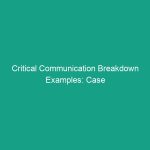Introduction
In today’s fast-paced work Environment, the significance of Health, Safety, and Environment (HSE) cannot be overstated. Organizations across various industries face increasing pressure to ensure safe working conditions, adhere to regulatory frameworks, and protect the well-being of their employees. One of the critical components of maintaining Workplace Safety is the implementation of Safety Compliance Audits, which serve as a systematic evaluation of a company’s adherence to Safety Regulations and Standards.
Safety compliance audits not only help organizations identify Hazards but also assist in cultivating a culture of Safety within the workplace. In this article, we will delve into the essential guidelines for conducting effective safety compliance audits, highlighting Best Practices, challenges, and future trends. Understanding these aspects is crucial for any organization aiming to minimize risks and enhance overall Workplace Safety.
Understanding Safety Compliance Audits
Before diving into the guidelines, it is essential to grasp the concept of safety compliance audits. These audits are comprehensive assessments that evaluate an organization’s adherence to various safety regulations, standards, and practices. They play a vital role in identifying potential Hazards, ensuring compliance with legal requirements, and promoting a proactive approach to Workplace Safety.
Safety compliance audits can be categorized into several types, including internal audits, external audits, and regulatory inspections. Each type serves a unique purpose and provides valuable insights into an organization’s safety performance:
- Internal Audits: Conducted by an organization’s own safety team, these audits focus on evaluating internal processes, policies, and compliance with established safety protocols.
- External Audits: Performed by third-party organizations, external audits provide an unbiased assessment of safety compliance and highlight areas for improvement.
- Regulatory Inspections: Mandated by government agencies, these inspections ensure that organizations comply with federal, state, and local safety regulations.
Each category of audit plays a crucial role in shaping an organization’s safety culture and ensuring that Best Practices are followed consistently.
Regulatory Frameworks Governing Safety Compliance
An organization’s safety compliance audits are heavily influenced by various regulatory frameworks. Understanding these regulations is crucial for conducting effective audits and ensuring compliance. Here, we explore some of the key regulatory bodies and frameworks that govern Workplace Safety:
Occupational Safety and Health Administration (OSHA)
In the United States, the Occupational Safety and Health Administration (osha) is the foremost regulatory body responsible for ensuring safe and healthy working conditions. OSHA sets and enforces standards, provides Training, and offers assistance to organizations in maintaining compliance with safety regulations. Regular audits are essential for organizations to demonstrate adherence to OSHA standards and avoid potential penalties.
International Organization for Standardization (ISO)
The International Organization for Standardization (ISO) develops and publishes international standards, including those related to Occupational Health and safety management systems (ISO 45001). Compliance with ISO standards enhances an organization’s credibility and commitment to safety. Safety compliance audits under the ISO framework help organizations identify gaps in their safety management systems and implement necessary improvements.
Environmental Protection Agency (EPA)
The Environmental Protection Agency (EPA) oversees regulations regarding Environmental Safety, including hazardous waste management, emissions control, and Chemical Safety. Organizations must consider the EPA’s regulations during safety compliance audits, particularly if they handle hazardous materials or operate in environmentally sensitive areas.
Best Practices for Conducting Safety Compliance Audits
To ensure effective safety compliance audits, organizations should follow best practices that enhance the auditing process and promote a culture of safety. Here are several key best practices to implement:
1. Develop a Comprehensive Audit Plan
A well-structured audit plan is essential for guiding the auditing process. This plan should outline the scope, objectives, and methodology of the audit, as well as the resources required. By having a clear plan, organizations can ensure that all relevant areas are assessed, and potential risks are identified.
2. Involve Stakeholders
Engaging key stakeholders, including management, employees, and safety personnel, is crucial for a successful audit. Their insights and experiences can provide valuable information about the organization’s safety culture and potential hazards. Collaboration fosters a sense of ownership among employees, encouraging them to actively participate in safety initiatives.
3. Utilize Checklists and Tools
Checklists and auditing tools can streamline the audit process and ensure consistency in evaluations. By utilizing standardized checklists, auditors can systematically assess compliance with safety regulations and company policies. Additionally, technology can play a role in enhancing audit efficiency, with software solutions designed to facilitate data collection and analysis.
4. Conduct Regular Training
Training is an essential component of the safety compliance audit process. Regular training sessions for employees and auditors can enhance awareness of safety regulations, emerging risks, and best practices. By keeping everyone informed, organizations can cultivate a proactive safety culture that extends beyond the audit process.
5. Document Findings and Follow-Up
Thorough documentation of audit findings is critical for tracking progress and ensuring accountability. Organizations should create detailed reports that outline identified hazards, non-compliance issues, and recommended corrective actions. Furthermore, a follow-up process should be established to monitor the implementation of corrective measures and ensure continuous improvement.
Case Studies: Successful Implementation of Safety Compliance Audits
Real-world examples can provide valuable insights into the effectiveness of safety compliance audits. Here, we highlight two case studies that illustrate successful implementation and the resulting Benefits.
Case Study 1: Manufacturing Company A
Company A, a mid-sized manufacturing firm, faced challenges with workplace accidents and regulatory compliance. After conducting a comprehensive safety compliance audit, the organization identified several areas for improvement, including inadequate training programs and insufficient Hazard Communication. By implementing the audit’s recommendations, Company A revamped its safety training initiatives and improved communication regarding hazardous materials. As a result, the organization experienced a significant decrease in workplace incidents and improved employee morale.
Case Study 2: Construction Company B
Construction Company B operated in a highly regulated environment, making safety compliance audits essential for its operations. Following an external audit, the company discovered gaps in its safety equipment Maintenance protocols. By addressing these gaps and investing in regular equipment inspections, Company B not only ensured compliance with OSHA regulations but also enhanced overall site safety. The proactive measures taken post-audit led to a notable reduction in near-miss incidents and reinforced the company’s commitment to safety.
Challenges in Safety Compliance Audits
While safety compliance audits are crucial for maintaining Workplace Safety, organizations often face challenges in the auditing process. Understanding these challenges can help organizations develop strategies to overcome them:
1. Resistance to Change
Employees may resist changes recommended during audits due to fear or lack of understanding. To mitigate this, organizations should foster open communication and involve employees in the audit process. By emphasizing the benefits of proposed changes, organizations can gain buy-in and facilitate smoother implementations.
2. Resource Constraints
Conducting thorough audits requires time, personnel, and financial resources. Organizations may struggle to allocate these resources effectively. To address this challenge, companies can prioritize audit areas based on risk assessment and focus on high-impact areas first. Additionally, leveraging technology can streamline the auditing process, reducing the burden on personnel.
3. Keeping Up with Regulations
The regulatory landscape is constantly evolving, and organizations must stay informed about new requirements. Establishing a dedicated compliance team can help organizations monitor regulatory changes and adapt their audits accordingly. Continuous education and training for staff involved in compliance can also ensure that everyone is up to date with the latest regulations.
Future Trends in Safety Compliance Audits
The landscape of safety compliance audits is continually changing, influenced by advancements in technology and shifts in workplace dynamics. Here are some emerging trends that organizations should be aware of:
1. Increased Use of Technology
Technology is transforming the way audits are conducted. From data analytics to mobile applications, technology enables more efficient data collection, analysis, and reporting. Organizations can leverage software tools to track compliance status, automate reporting, and enhance overall audit accuracy.
2. Focus on Mental Health and Well-being
With growing recognition of the importance of mental health in the workplace, safety compliance audits are also evolving to address psychological well-being. Organizations are increasingly assessing workplace conditions that impact employee mental health, such as stress levels, job satisfaction, and work-life balance. Incorporating mental health considerations into audits can lead to more holistic safety practices.
3. Emphasis on Sustainability
As organizations strive for sustainability, safety compliance audits are expanding to include environmental considerations. Companies are now evaluating their environmental impact as part of the audit process, ensuring that safety practices align with environmental stewardship. This trend reflects a broader commitment to corporate social responsibility and sustainable business practices.
Conclusion
In conclusion, safety compliance audits are a vital component of any organization’s health, safety, and environment strategy. By understanding the regulatory frameworks, implementing best practices, learning from case studies, and addressing challenges, organizations can conduct effective audits that enhance workplace safety. As we look to the future, embracing technology and expanding the focus of audits will be crucial for maintaining compliance and ensuring the well-being of employees.
As leaders and employees alike, it is our responsibility to champion safety compliance audits within our organizations. By prioritizing safety, we not only protect our most valuable asset—our workers—but also foster a culture of accountability and continuous improvement. Let us commit to making safety a fundamental aspect of our workplace, ensuring that every employee feels valued and secure. Take the first step today by reviewing your current safety compliance audit processes and identifying areas for improvement.


